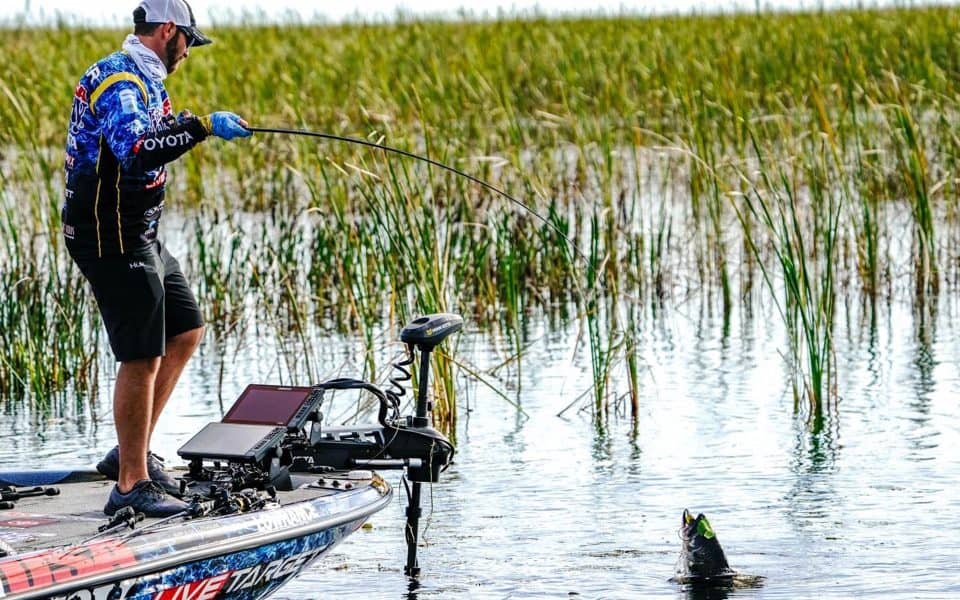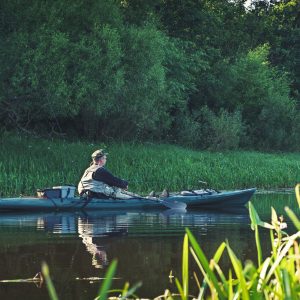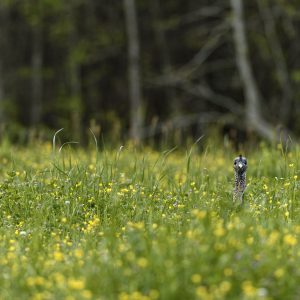To qualify for the Bassmaster Classic, you must compete against the world’s best bass fishermen. Just qualifying for the Classic is a lifetime accomplishment for most bass anglers. Mossy Oak Pro Brandon Lester, from Fayetteville, Tennessee, has qualified for the Classic eight out of 10 years. He worked in an injection-molding factory before becoming a fulltime professional bass angler with the help of his extended family and his sponsors, and through his hard work and many hours spent on the water.
Gamekeepers has asked Lester how to find and catch bass from June through the summer. Lester offers his best bass techniques and the lures and names at what time of day he catches the most bass in ponds, lakes, rivers, creeks and reservoirs in the summertime.
“I try to be a very-versatile fisherman and want to fish whatever tactics are producing bass that day,” Lester says. “The unknowns to summer bass fishing success are whether: you can find the bass; the bass want to feed; and you have the correct equipment, including lures and tackle, to catch bass. I’ve seen schools of bass, perhaps even eight to ten bass in a school, holding on a river ledge or underwater brush before, however, after fishing with everything but the kitchen sink for them, I’ll finally decide the bass don’t want to eat my lures at that time. That’s when you must think outside the box and fish an old lure or perhaps a lure everyone has forgotten will catch those bass.”
Lures for Summertime Bass
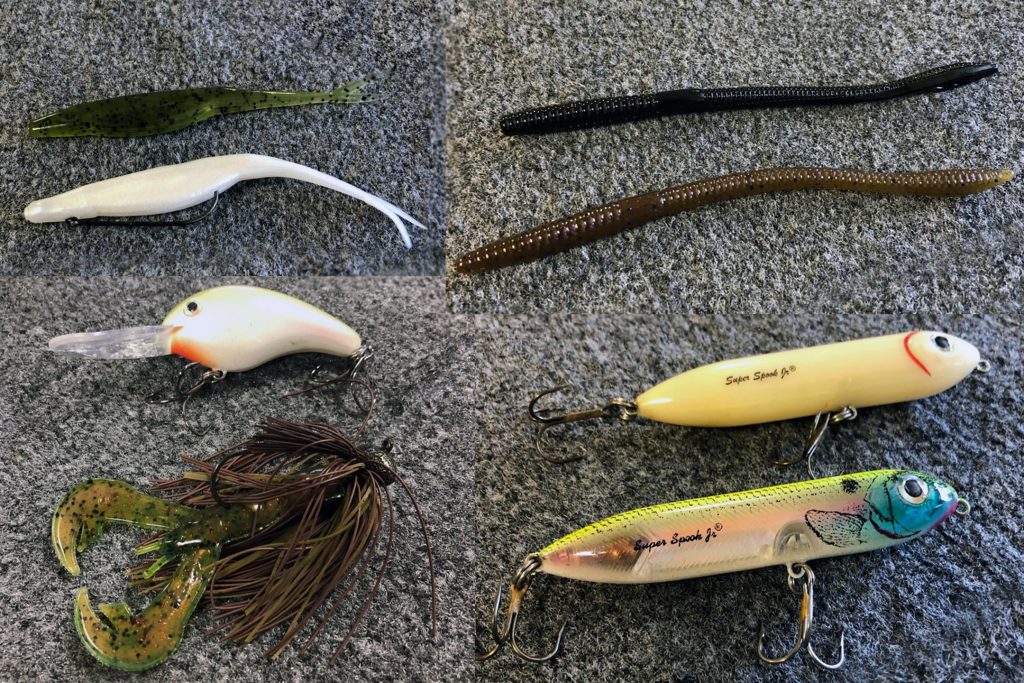
John Phillips
When asked where bass will be holding in ponds and small lakes in the summer, Lester explains that fishing ponds and small lakes is different from bass fishing rivers and large impoundments. “Small bodies of water are greatly impacted by the weather and changing water temperatures. For this reason, I think bass fishing in the early morning and late evening hours is critical to your success in June, as well as throughout the rest of the summer. Generally, the weather will be cooler at those two times of the day. I’ve learned that fishing early and late has proven to be when the bass are the most actively feeding in June.”

John Phillips
Lester goes on to say that one of the advantages of fishing ponds in the summer is that most ponds, small lakes and private bodies of water don’t get fished as heavily as river systems and major impoundments do. So, the bass aren’t as educated to lures as bass in bigger bodies of water are that receive heavy fishing pressure throughout the year.
“For example, the bass at Lake Guntersville in north Alabama probably have seen every lure ever made, since Guntersville has been selected as one of the top-five bass lakes in the nation,” Lester explains. “When fishing private bodies of water, you may want to use the lures you’re most confident with and comfortable fishing to be the most successful.”
Lester mentions that these lures pay June bass dividends:
- A 6–8 inch, Texas-rigged, straight-tail worm like a Zoom Trick Worm with a light weight;
- A popper, like a Heddon Super Spook Jr., that the bass easily can see and eat – especially early in the morning when you’re topwater fishing;
- A Zoom Fluke in pearl white that looks like a minnow and is effective when fishing close to the surface of the water; and
- A plastic worm that matches the color of the water. For instance, if the pond’s spring-fed, and the water’s clear, he’ll fish a worm in the watermelon seed or green-pumpkin colors. If the water’s darker and dirtier, he’ll fish a Junebug-colored or a black-and-blue worm. Even if he’s fishing a stock pond where cattle come in the mornings and afternoons and wade out into the water to drink, he still can catch bass fishing a Junebug color or a black-and-blue straight-tail worm.
Equipment for Catching Summertime Bass
When Lester fishes ponds in the summer, he uses his signature system rod, the Mustad Instinct — a 6-foot, 10-inch medium-action spinning rod with a 2,500-size spinning reel.
“I like 10-pound Vicious braided line tied to a 10-pound Vicious 6-foot long fluorocarbon leader,” Lester reports. “The knot I use to connect these two lines is important. I like a “double Uni knot” to join the braid and the monofilament together, and this knot allows the two lines to move easily through the guides of my spinning rod. I’ll also have a baitcasting set-up with a Mustad Instinct 7-foot medium-heavy-action rod with 14-pound test Viscous monofilament. I’ll fish this set-up only when I’m using topwater lures, because monofilament floats, stretches and doesn’t interfere with the bait’s action.”
In today’s bass fishing world, you don’t hear much about anglers still fishing monofilament line because braided and fluorocarbon lines have dominated most bass tournaments. But, Lester’s still a fan of using monofilament line when fishing topwater lures. “Most pond fishermen don’t want to spend $70 for a spool of fluorocarbon line; luckily, you don’t have to, since millions of bass have been caught on monofilament line. Once a bass attacks the bait, because monofilament stretches, unlike fluorocarbon or braid, when the bass takes the lure and I set the hook, the line will stretch and enable the bass to get the lure deeper in its mouth, making a more-solid hook set before the bass feels the hook.”
Tactics for Catching Summertime Bass
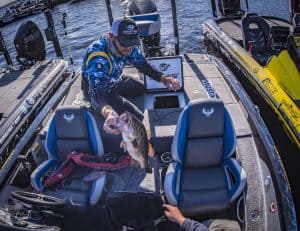
John Phillips
After June ends, and the Dog Days of Summer start, fishing early and late in the day becomes much-more important to your bassing success, particularly after the sun gets up. In the hotter weather of mid to late summer, the bass won’t feel like feeding and generally will move to the deeper parts of the lake or the pond where the water’s cooler.
- Ponds and Small Lakes: “If brush or structure in a pond or a small lake provides shade and cover for the bass, you’ll often discover bass holding in these regions, especially after the early-morning bite or just before the late-afternoon bite,” Lester reports.
- Rivers: According to Lester, “If you have property on a river with current running through it, you must fish the complete opposite of how you fish a pond. Current brings cooler water and oxygen into a larger body of water. Therefore, a productive place to fish for bass is where underwater creek channels intersect with river channels. That’s where the bass often will set-up to feed.
“I’ll fish a deep-diving crankbait, like a Strike King 6XD, on deep-water ledges on the edges of the intersections of these creek and river channels. My favorite color is citrus shad. Another lure to use when fishing deep river ledges is a 3/4-ounce football head jig in green pumpkin or brown. Sometimes the bass on those ledges don’t want to chase bait and prefer this more-subtle and slower-moving lure.”
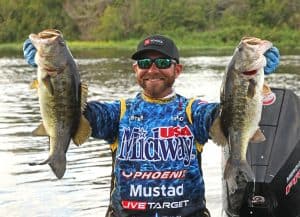
John Phillips
Topwater lures also work in or on the edge of a current – specifically the Heddon Super Spook Jr. in a bone color, since it resembles a shad. As the weather becomes hotter, offshore ledges in rivers can be productive places to find limits of bass.
- Large Impoundments: If you own or lease land on the edge of a large impoundment where there’s a nearby public boat ramp, you’ll find bass in places other than where you will on the river.
“I live close to Pickwick and Guntersville lakes in north Alabama,” Lester explains. “When the shoreline water heats-up, the bass will move out onto ledges, shell beds, underwater humps, holes and grass beds. If you have a property on or near a major impoundment like these lakes or Lake Eufaula, you have to think of that reservoir as a huge pond that requires many of the same tactics and lures you use when fishing ponds.
“In most tournaments we fish, I most often fish topwater lures early in the mornings. Next, I search for underwater brush piles, trees and stumps on large impoundments and fish them because the baitfish move into those places seeking shade. Bluegills and bass will concentrate around those brush shelters. A brush pile in a major reservoir is like an isolated ecosystem. Putting brush piles in a large impoundment attracts various kinds of fish.
“I’m often asked, ‘Where do you look for brush piles on a major reservoir?’ The main river points are the first places I check to find brush piles. Most reservoirs we fish were built in 1940 – 1960. Therefore, most of the natural underwater cover is gone. Much of the new brush in these reservoirs is man-made. Bass and crappie anglers build brush shelters on underwater stumps, points and bottom structures. You must have a quality depth finder to pinpoint these brush piles.
“I use my side-imaging feature on my Lowrance ActiveTarget to mark the brush I see underwater as waypoints, and then I’ll fish them. I also use my ActiveTarget’s forward-scanning feature. That new development in sonar has changed the way I fish dramatically. That feature allows me to stay 60-80 feet away from an underwater brush pile. I can see how-many bass are on an underwater brush pile, identify any bluegills and watch my lure go down and fall right into the brush pile. I can see that same lure go over the top of that brush pile and determine if the bass are chasing my bait. However, I don’t want to make bass fishermen think they must use forward-facing sonar to successfully fish for bass. Bass fishing is a sport anyone can enjoy, whether you’re fishing from a kayak, a john boat, or a high-performance bass boat.
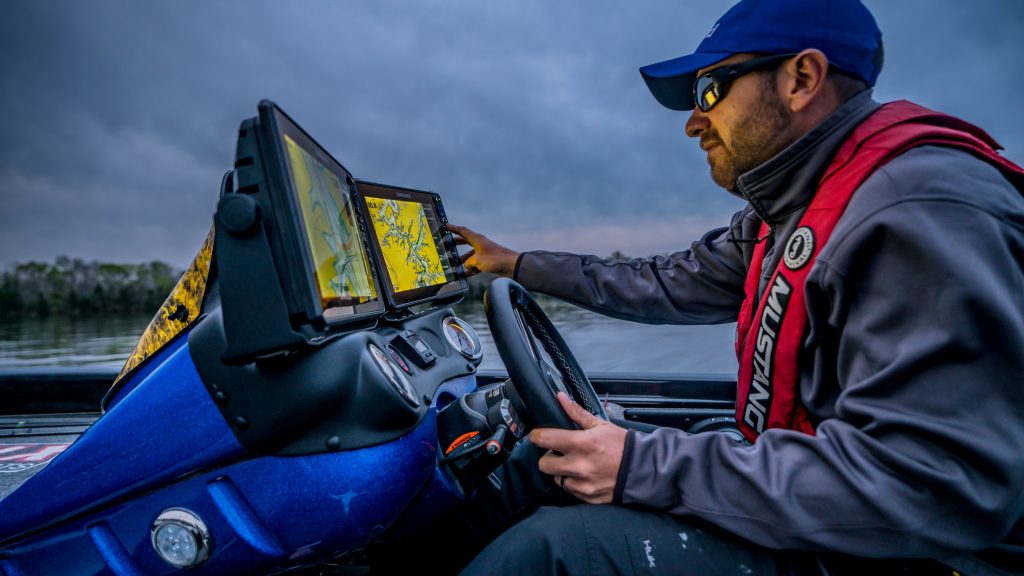
John Phillips
“People often ask me too, ‘How can you tell the difference between bass, crappie, bluegills or other fish that may be holding on structure like stumps, logs, rocks, points with no cover, underwater humps or bottom breaks?’ I’ve learned that the more you use forward-facing sonar, the easier you can determine the species of fish holding on that structure by the way the fish act or don’t react to your lures. When you pull a bait in front of a catfish or a carp, they won’t even look at your bait. Nine times out of ten, if you pull that same lure in front of a bass, that fish will key in on it and move toward it.”
Lester is very proud of his association with Mossy Oak, as he explains, “I’m really excited to be a part of the Mossy Oak Fishing Team. I not only tournament bass fish, I’m also a hunter as well. Mossy Oak has one of the strongest names in the outdoor industry and has a well-known reputation. Not just a camouflage company, Mossy Oak contributes a lot of money to and supports various conservation organizations and outdoor youth organizations. I’m so proud to be a part of that and be able to share my fishing knowledge to help GameKeepers catch more bass in June and the rest of the summer.”

